#Leonard M. DeLessio
Explore tagged Tumblr posts
Text

Wendy Carlos, b. November 14, 1939 / 2024
(image: Wendy Carlos at work in her New York City recording studio, October 1979. Photo by Leonard M. DeLessio/Corbis via Getty Images. (via Synth History))
180 notes
·
View notes
Text

Wendy Carlos in her New York City studio (1979), photograph by Leonard M. DeLessio
#Wendy Carlos#synth#recording studio#New York city#NYC#analog#retro#vintage#tech#fear#photography#Leonard M. DeLessio
27 notes
·
View notes
Text
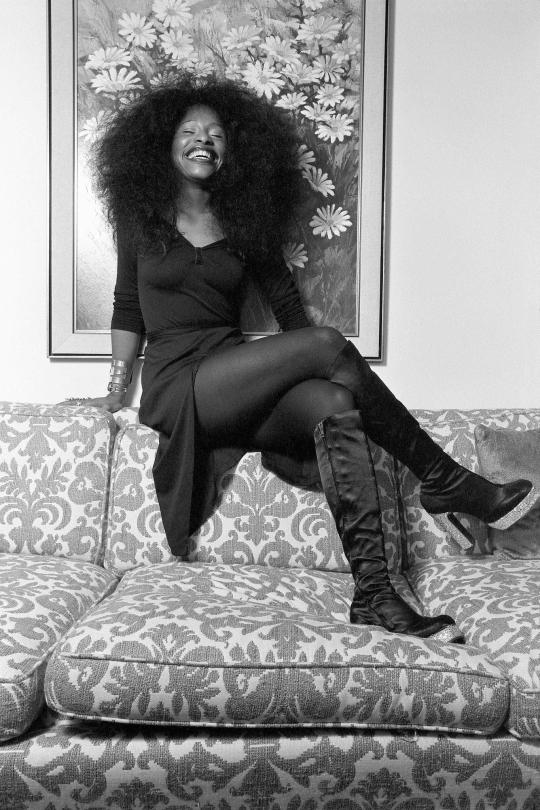
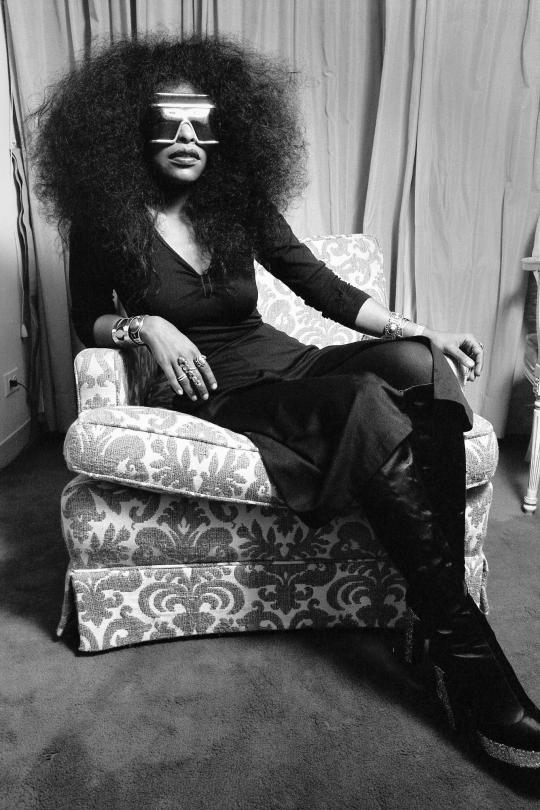
Chaka Khan in New York City. 1975. Photographed by Leonard M. DeLessio.
147 notes
·
View notes
Text

Wendy Carlos in her New York City studio (1979), photo by Leonard M. DeLessio
40 notes
·
View notes
Text
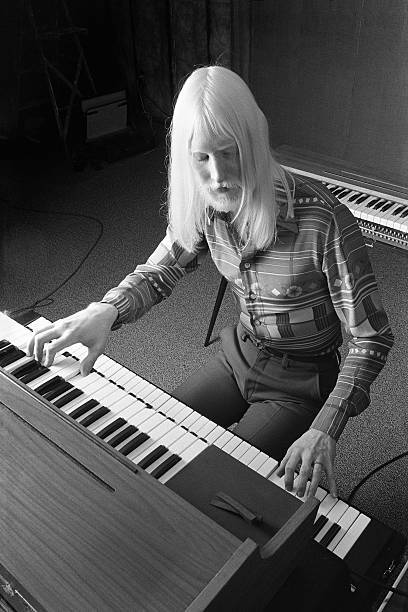
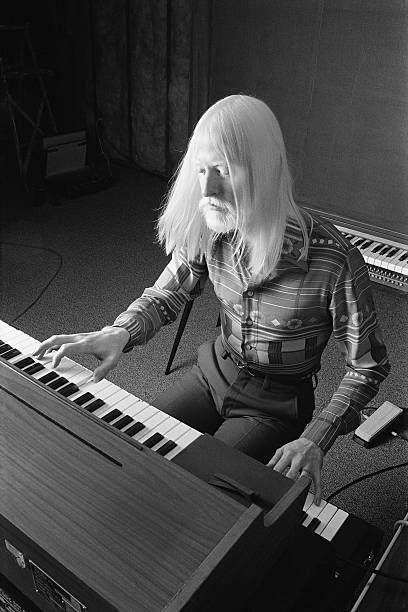
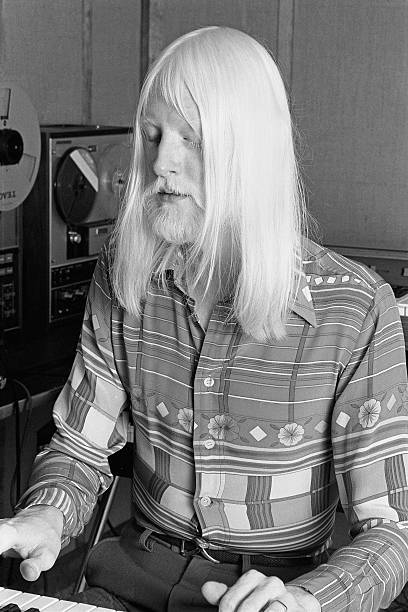
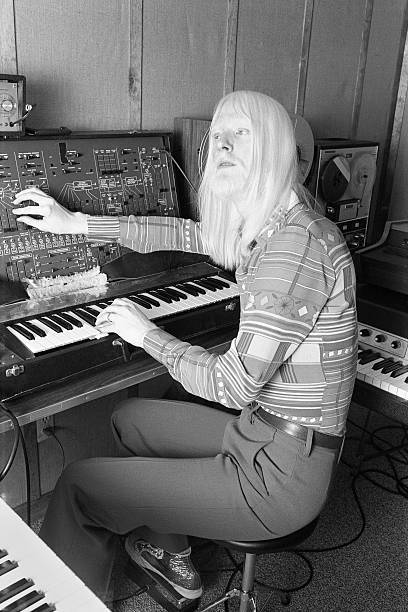
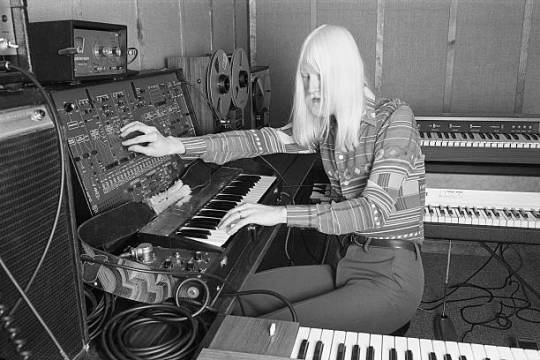
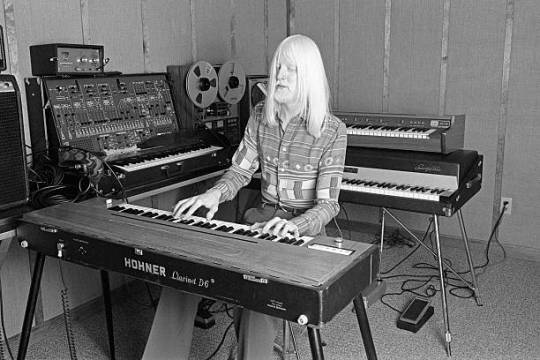
Edgar Winter in his home studio, in Connecticut. Photo by Leonard M. DeLessio
8 notes
·
View notes
Text
Rock Hall of Fame Class of 2023: Breaking Down the Inductees’ Chart Feats
Trevor Anderson

From left: Willy Nelson, George Michael, Missy Elliott and Kate Bush. Wally McNamee/Corbis/Getty Images; Michael Putland/Getty Images; Sunday Mirror/Mirrorpix/Getty Images; KMazur/WireImagenone
On Nov. 3, 11 musical acts, one hit-generating songwriter and Don Cornelius, the creator-host — from 1971 to 1993 — of groundbreaking syndicated Black music showcase Soul Train, will be inducted into the Rock & Roll Hall of Fame.
This year’s list of honorees includes a crop of legendary performers: British art-pop legend Kate Bush, hip-hop trailblazer Missy Elliott, late megastar George Michael, pop-rock hitmaker Sheryl Crow, outlaw country icon Willie Nelson, rap-rock firebreathers Rage Against the Machine and smooth soul group The Spinners.
Elsewhere, two individuals are set to be inducted under the “musical influence” category, including “Father of Hip-Hop” DJ Kool Herc and guitar pioneer Link Wray; while the “musical excellence award” will be given to three others: funk idol Chaka Khan, veteran studio musician Al Kooper and longtime Elton John lyricist Bernie Taupin.
Notably, four of the seven performers are being inducted on their first nomination: Crow, Elliott, Michael and Nelson. Among those, Elliott was the only artist eligible for the first time in 2023.
While the achievements of many of the above-named inductees — performers like Elliott, Michael, Crow, Nelson, Rage and Khan — are well-known to many, others on the list require more of an introduction. Below, we’ve compiled quick facts on each of the honorees, from the trails they’ve blazed in the industry to the hit songs that shot them to fame and fortune.
Below, a look at their musical milestones and chart achievements.

Kate BushPhoto : TV Times/Getty Images
In 2022, Bush scored her greatest Billboard Hot 100 success when “Running Up That Hill (A Deal With God)” reached No. 3, spurred by its synch in the fourth season of Netflix’s Stranger Things. The song reached No. 30 during its original 1985 run.
Sheryl CrowPhoto : Karjean Levine/Getty Images
Crow boasts seven No. 1s on the Triple A Airplay chart, the most among women in the list’s history. She has also landed nine top 10 albums on the Billboard 200.
Missy ElliottPhoto : James Keivom/NY Daily News Archive/Getty Images
Elliott became the first female rapper with three No. 1s on Top R&B/Hip-Hop Albums, with Supa Dupa Fly (1997), Da Real World (1999) and Miss E… So Addictive (2001).
DJ Kool HercPhoto : Steven Ferdman/Getty Images
Fifty years after Herc’s historic party in the Bronx, where he set hip-hop in motion, the genre has gone global and reshaped popular music. According to Luminate, R&B/hip-hop accounted for nearly 27% of all U.S. music consumption in 2022 — more than any other genre.
Chaka KhanPhoto : Leonard M. DeLessio/Corbis/Getty Images
Between Khan’s work with funk bank Rufus and her solo material, the legendary vocalist scored 58 hits on the Hot R&B/Hip-Hop Songs chart between 1973 and 2008. From her early days, she proved a consistent commercial force, landing a top 10 on the chart each year from 1973 to 1984.
Al KooperPhoto : Michael Ochs Archives/Getty Images
The musician who contributed organ to “Like a Rolling Stone” (1965) and tambourine on “Rainy Day Women #12 & 35” (1966), Bob Dylan’s two highest-charting Hot 100 songs — both reached No. 2 — has also performed with such rock legends as The Rolling Stones, The Who, The Jimi Hendrix Experience and B.B. King.
George MichaelPhoto : Michael Putland/Getty Images
The late U.K. artist charted seven No. 1s on the Hot 100 as a solo artist and three as part of the duo Wham! Michael’s most recent visit to the chart was in 2022, when Wham!’s classic “Last Christmas” hit the top five for the first time, 38 years after its release.
Willie NelsonPhoto : Courtesy Everett Collection
In July 2020, 87-year-old Nelson became the first artist to score top 10s in every decade — seven in all — on the Top Country Albums chart since its launch in January 1964. His 70th solo album, 2020’s First Rose of Spring, was his 53rd top 10 on the chart.
9
Rage Against the Machine
Rage Against The MachinePhoto : Niels van Iperen/Getty Images
Of eight total appearances on Alternative Airplay, Rage Against the Machine has placed three songs in the top 10 — all in 2000 — with “Guerrilla Radio” peaking the highest at No. 6.
The SpinnersPhoto : Echoes/Redferns
The Michigan R&B hit-makers boast a 34-year span of hits on the Hot R&B/Hip-Hop Songschart, from their 1961 debut, “That’s What Girls Are Made For,” to a featured credit on Rappin 4-Tay’s “I’ll Be Around” in 1995. In that time, they racked up 19 top 10 hits, including six No. 1s.
Bernie TaupinPhoto : Fin Costello/Redferns
Taupin has co-written eight of Elton John’s Hot 100 No. 1s and 27 of his top 10s, as well as 16 of the Rocket Man’s Adult Contemporary No. 1s, which helped cement John’s standing as the chart’s all-time top artist.
Link WrayPhoto : Gie Knaeps/Getty Images
One of rock music’s guitar innovators, particularly with the 1958 instrumental “Rumble,” Wray reached the Hot 100 three times, led by the No. 23 peak of “Raw-Hide” in 1959.
Sent from my iPhone
1 note
·
View note
Text

American singer and songwriter Chaka Khan, frontwoman of the funk band Rufus, in her New York City hotel room. (Photo by Leonard M. DeLessio, 1975)
5 notes
·
View notes
Text







Chaka Khan photographed by Leonard M. DeLessio (1975)
393 notes
·
View notes
Photo


Smokey Robinson, 1975 (photo by Leonard M. DeLessio/Corbis via Getty Images); George Harrison, 1975 (photo by Robert Ellis).
George was a great admirer of Smokey Robinson as a songwriter and singer, with and without The Miracles; he wrote two songs in Smokey's honor: "Ooh Baby (You Know That I Love You)" on Extra Texture (1975), and "Pure Smokey" on Thirty-Three & 1/3 (1976).
“The Beatles were the first white act of any stature that I ever saw in my life who came out and said, ‘Hey, man, we grew up listening to Black music and we love it, and we got a lot of our feeling from Black music.’ No white act had ever said that before, come out in public or in the press and said anything like that.“ - Smokey Robinson, Beatles Stories: A Fab Four Fan’s Ultimate Road Trip
“We used to sit around singing a lot of Smokey Robinson songs. That kind of sealed our relationship, I think. [George] said, ‘You’re the only person I’ve ever known who sang the high note at the end of “I’ll Try Something New.”’ We went to see Smokey at The Roxy one night and they talked. Smokey was really flattered.” - Olivia Harrison, Extra Texture 2014 remaster liner notes
“[Smokey], for my taste, is one of the most consistent, he’s written so many fantastic tunes, and although I’m not anywhere in his league as a singer this song always reminds me of that Smokey type of mood. So I dedicate the song to him.” - George Harrison, Extra Texture promotional interview, 1975
“I mean, I wrote ‘Pure Smokey’ on 33 1/3 as my little tribute to his brilliant songwriting and his effortless butterfly of a voice.” - George Harrison, Musician, November 1987 (x)
“I dedicated a tune on the last album to Smokey but I’d written this one at the same time as that song, which was ‘Ooh Baby’ [(You Know That I Love You)]. This song called ‘Pure Smokey’ was really — that was the title of one of Smokey Robinson’s albums and it was really just an idea I had. Sometimes, you know, when you like something, and you never get to say to somebody that you appreciated it, so I thought I’d use this as a way of getting across a point of… you know, I didn’t want to be late, I didn’t want to die and realize I hadn’t told my dad I like him, you know, or whatever. It’s like that, and so I think I try and make a point of — if I really like something now I want to tell the person I like it rather than to find out that I should’ve done something and I never. And I just try and live like that now. So this song just says, in the past I’d hesitate, I’d feel some joy but before I showed my thanks it became too late and now all the way I want to find time to stop to say thank you Lord for giving us each new day. So it’s just really… just to say thanks for certain things. And so then it just gets into Smokey, saying — because I got a lot of pleasure out of his records and so it’s just a thank you.” - George Harrison, A Personal Music Dialogue With George Harrison at 33 & 1/3, 1976
“I had the pleasure of meeting the Beatles. And George, I spent more time with him than any of the other guys, who I met briefly. But George for a time was living in Los Angeles, and I had the pleasure of being in his company a few times. And it was, once again, a flattering thing he did. To feel like that and write about it so the world would know he felt like that. I was very flattered by that. - Smokey Robinson, Ticket To Ride: A Celebration Of The Beatles (x)
#George Harrison#quote#quotes about George#quotes by George#Smokey Robinson#George's jukebox#Extra Texture#Thirty Three And A Third#Ooh Baby (You Know That I Love You)#Pure Smokey#George and Olivia#1970s#1975#George and Smokey Robinson#fits queue like a glove
49 notes
·
View notes
Photo
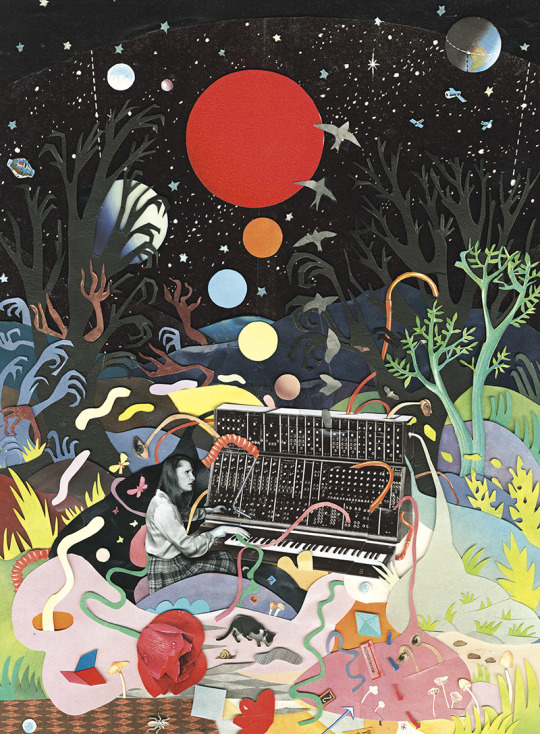
Illustration by Ben Giles. Source photographs: Wendy Carlos in her New York City recording studio, 1979 © Leonard M. DeLessio/Corbis/Getty Images; Moog synthesizer © Granger
14 notes
·
View notes
Photo
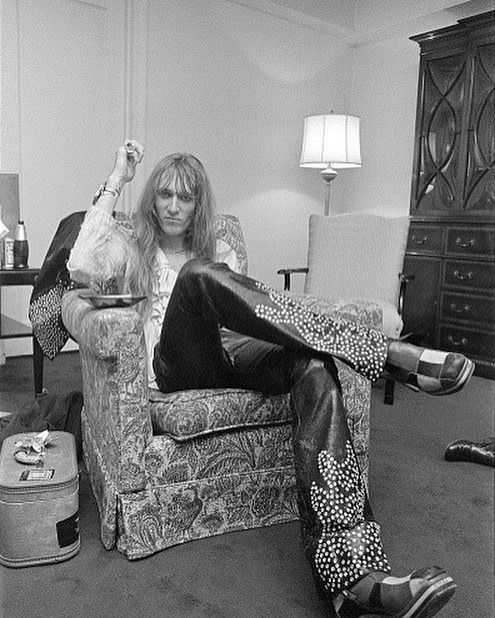
September 23rd 1947 Neil Smith is born Photo relaxing in a room at The One Fifth Avenue Hotel, between their early and late shows at the Academy of Music in New York City. (Photo by Leonard M. DeLessio) https://ift.tt/2mhdTP1
8 notes
·
View notes
Text
Ama Synth Pop? Agradeça a Wendy Carlos, a mulher trans que inventou isso.

A musicista pioneira vencedora do Grammy nos anos 60 ajudou a pavimentar o caminho para a New Wave, EDM e Kim Petras.
por Sam Manzella
É impossível imaginar a música popular contemporânea sem os sintetizadores. O instrumento, que gera sinais de áudio que são convertidos em som, permeia quase todos os gêneros musicais modernos. Pop, dance pop, hip-hop, EDM, experimental - se for baseado em eletrônica, pode ser rastreado até à invenção do sintetizador comercial. E sim, isso inclui a maioria de artistas LGBTQ que compõem suas listas de reprodução assumides (ou não - Kim Petras ou Sophie. alguém mais?)
Mas por trás de seus sons familiares (embora ainda aparentemente fora de órbita) está um nome que você pode não reconhecer: Wendy Carlos , uma talentosa artista musical, engenheira de produção e transgênero cujo uso de sintetizadores com sua visão do futuro os ajudou a torná-los onipresentes.
Wendy, agora com quase 80 anos, possui dois diplomas da Ivy League, três Grammy Awards (todos pelo clássico Switched-On Bach de 1968 ) e um punhado de trilhas sonoras aclamadas pela crítica (para A Clockwork Orange de 1971 e The Shining , entre outros) sob o cinto dela. Sua ascensão à fama na indústria da música começou em Nova York. Depois de se formar na Universidade de Columbia com um mestrado em composição musical na década de 1960, Carlos, de 20 e poucos anos, trabalhou ao lado de inovadores de música eletrônica e professores de Columbia como Vladimir Ussachevsky e Otto Luening .

Leonard M. DeLessio / Corbis via Getty Images Carlos em seu estúdio de gravação em Nova York por volta de 1979.
Lá, ela também conheceu Robert “Bob” Moog, um colega engenheiro de áudio e homônimo do sintetizador Moog , uma versão analógica clássica do instrumento. Os dois se tornaram amigos rapidamente, e seu relacionamento de trabalho durou cerca de 40 anos.
"Foi um encaixe perfeito", lembrou Wendy em um blog dedicado a Moog em 2005, depois que o pioneiro de sintetizador de 71 anos morreu de câncer. “Ele era um engenheiro criativo que falava música; Eu era uma musicista que falava ciência. Parecia uma reunião de mentes simpáticas, como se ele fosse meu irmão mais velho, talvez".
Em 1964, Moog estreou seu sintetizador sob medida - uma versão menor e mais portátil dos sintetizadores de parede a parede que a maioria de técnicos de áudio e engenheiros de gravação usava - na convenção anual da Audio Engineering Society (AES) de Nova York. Ele se tornaria o primeiro sintetizador comercial do mundo, e Wendy Carlos o usaria para gravar Switched-On Bach, uma reimaginação eletrônica das composições clássicas de Johann Sebastian Bach. O disco de música clássica vencedor de três prêmios Grammy - que vendeu 1.000.000 cópias - é amplamente creditado por mesclar músicas populares e sintetizadores. (Antes do Switched-Bach , os instrumentos eram relegados a músicas mais experimentais e com menos sucesso comercial).
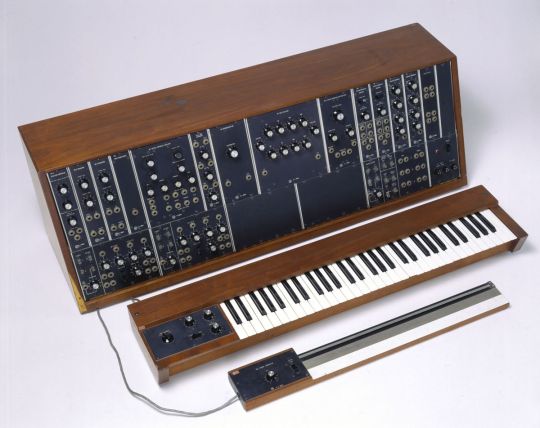
SSPL / Getty Images Um sintetizador Moog de 1968.
De lado suas honras de prestígio, Wendy estava lutando. Na verdade, ela lutava com a disforia de gênero desde a infância e começou a se sentir desesperada e suicida na faculdade.
Somente em 1979 - dez anos depois de ela ter varrido as categorias de Música Clássica no Grammy de 1969 - ela se assumiu publicamente como mulher em uma entrevista à revista Playboy. Carlos lembrou como ela se sentiu ansiosa demais para se apresentar ao vivo quando iniciou a terapia de reposição hormonal (TRH) e iniciou sua transição física em segredo. Mas ela não podia mais negar quem ela era. Quando a Playboy perguntou se ela “tinha alguma ideia” do que teria acontecido se ela não tivesse começado a viver sua vida como mulher, Carlos foi sincero: “Sim. Eu estaria morta."
É difícil extrapolar a magnitude de seu anúncio. Em 2019, em uma época em que questões trans são abordadas explicitamente por candidates à presidência em estágio de debates, uma pessoa pioneira da indústria que aparece em uma revista popular é motivo de comemoração. Mas na América da década de 1970, não era apenas algo inédito, mas potencialmente um fim de carreira (para não mencionar perigoso). A conversa cultural sobre aceitação de pessoas transgêneros, e muito menos de igualdade para transgêneros, ainda estava florescendo nos espaços LGBTIAPN+; quase não existia em espaços predominantemente heterossexuais cisgêneros.
Desde seu anúncio inicial, Wendy Carlos raramente abordou sua identidade de gênero em entrevistas (ela se recusou a ser entrevistada para esta história.) Isso pode ter algo a ver com a maneira como sua história foi contada. Em 1979, a Playboy fez algumas perguntas bastante invasivas, se não genuinamente curiosas. Mesmo depois de discutir detalhadamente sua transição, repórteres e editores continuaram a imprimir seu nome morto (nome de registro). Mas também em um artigo de 1985 da People, Carlos disse que ela conseguiu compor novas músicas depois de se abrir publicamente sobre quem ela realmente era. O fardo foi tirado; estava na hora de produzir.
"O público acabou sendo incrivelmente tolerante ou, se você desejar, indiferente", disse ela à revista. “Nunca houve a necessidade dessa ~charada~. Provou um desperdício monstruoso de anos da minha vida."
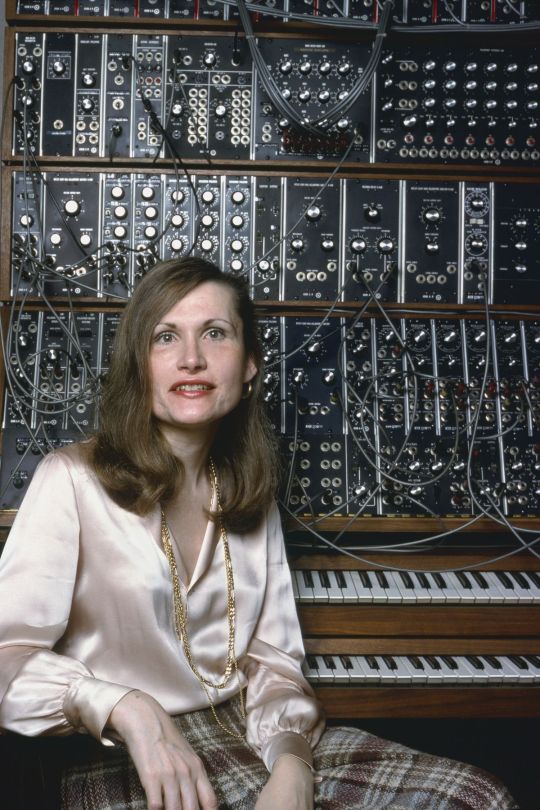
Leonard M. DeLessio / Corbis via Getty Images Carlos em 1979.
A sinceridade de Carlos em um momento em que a transparência ou a não-conformidade de gênero não estavam presentes nos radares da maioria da mentalidade norte-americana, preparou o caminho para uma geração de artistas eletrôniques LGBTQ. Décadas após o Switched-Bach , a trilha sonora do Tron e suas outras contribuições para a música sintetizada dos anos 70 e 80, uma nova onda de músicos queer pode criar o tipo de música e álbum que visualiza e ama sem a identidade deles.
Uns desses artistas é a Kiran Gandhi, também conhecida como Madame Gandhi , uma artista e ativista de música eletrônica de Los Angeles que credita a Carlos a mudança do jogo para pessoas marginalizadas na música eletrônica.
"Normalmente, imaginamos a comunidade de entusiastas de sintetizadores analógicos como uma comunidade muito homogênea", ela diz ao NewNowNext. Mas para Gandhi - uma mulher de cor, queer, cujas músicas como "O Futuro é Feminino" e "Top Knot Turn Up" são destinadas a empoderar pessoas marginalizadas - descobrir o papel central de Carlos na popularização da música sintetizada foi "tão inspirador e um alívio." Isso a fez querer pegar o instrumento muito mais.
youtube
Em 2018, Gandhi se apresentou no Moogfest, um encontro anual para entusiastas de sintetizadores e profissionais da indústria da música que ocorre na Carolina do Norte, onde Bob Moog passou os últimos 30 anos de sua vida. Ela se juntou ao palco para uma programação com outres artistas musiciais da eletrônica - todas mulheres ou pessoas não conformes de gênero - em homenagem ao 50º aniversário de Wendy Carlos e Switched On Bach .
Gandhi ficou emocionada com o fato de os organizadores do Moogfest terem prestado uma homenagem a Carlos, mas ela ficou especialmente agradecida por prestarem homenagem a sua transparência - um fato que ela desconhecia antes do evento.
“[Wendy Carlos] tornou as pessoas que estão agendando festivais mais interessadas em alcançar pessoas não-conformes de gênero, queer e mulheres de uma maneira que eu não acho que teria acontecido se ela não tivesse sido uma das maiores colaboradoras da música eletrônica" ela diz. “Então essa mudança - na verdade, colocando Wendy Carlos no mapa - nos deixou mais abertes a dizer: 'Uau, esse gênero (eletrônica) não é realmente o que pensávamos que era. É outra coisa. E isso é realmente muito mais legal."
Fonte: Logo
3 notes
·
View notes
Text

Lynyrd Skynyrd backstage at the Captial Theater, New Jersey (Leonard M. DeLessio)
1 note
·
View note
Text
Wendy Carlos
Wendy Carlos (she/her) is an establishing figure in electronic music and a trans woman. Carlos first came to prominence with the release of the album Switched-On Bach in 1968, in which she performed a series of pieces composed by Johann Sebastian Bach on a Moog synthesizer.[1] This project, which quickly swelled in popularity, caught the attention of the Grammys—she won three awards for the album in 1970[2]—and was subsequently noticed by director Stanley Kubrick, who hired her to compose the original score for A Clockwork Orange in 1971. She would go on to produce the soundtrack of both Kubrick’s 1980 horror, The Shining, followed by the original Walt Disney production of the sci-fi adventure Tron in 1982. Meanwhile, she continued to produce exciting, innovative music—largely played on the synthesizer, an instrument she is very heavily credited with pioneering[3]—which would provide some of the most obvious, substantial groundwork for the ongoing history of electronic music as a genre.[1]
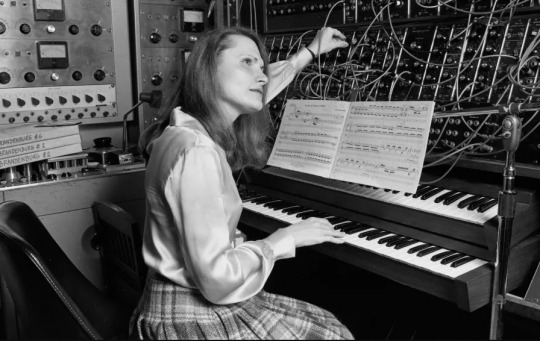
Wendy Carlos did not come out publicly until 1979, in an interview with Playboy magazine, though she had been living as a woman for several years prior. Though Carlos did not explicitly identify with activism on behalf of herself or any other trans people, she was very outspoken about her transition in this and subsequent interviews, expressing with incredible candour the struggle she had with presenting herself as a public figure in a way that did not align with her gender, underlining her wish “to liberate [herself]” through public disclosure.[3] By virtue of this openness and the simple significance of her contributions to musical history, Carlos has no doubt laid significant groundwork for the acceptance, respect, and celebration of trans artists in the music industry.
SOURCES
Image: Leonard M. Delessio, Wendy Carlos in her New York City Recording Studio, 1979, photograph, The Nation, "Synthesizing Sound and Self," October 15, 2020, https://www.thenation.com/article/culture/wendy-carlos-biography-review/.
[1] Wendy Carlos, "Biographical Notes," http://www.wendycarlos.com/biog.html.
[2] Recording Academy Grammy Awards, "Artist: Wendy Carlos," https://www.grammy.com/grammys/artists/wendy-carlos/1220.
[3] Jude Rogers, "'She Made Music Jump into 3D': Wendy Carlos, the Reclusive Synth Genius," The Guardian, November 11, 2020, https://www.theguardian.com/music/2020/nov/11/she-made-music-jump-into-3d-wendy-carlos-the-reclusive-synth-genius.
[4] L. Vernon Smith, "Playboy Interview: Wendy Carlos," 1979, https://www.digitaltransgenderarchive.net/files/nv935298c.
1 note
·
View note
Photo




Women of Rock Icons: Rock & Roll Hall of Fame Nominees [2/2]
Vote here! & Please like/reblog if you use!
#queens#Kate Bush#Sister Rosetta Tharpe#Chaka Khan#Rufus#Annie Lennox#Eurythmics#icons#women of classic rock#R&RHOF#R&RHOF icons#edit#me#queue in pocket
11 notes
·
View notes
